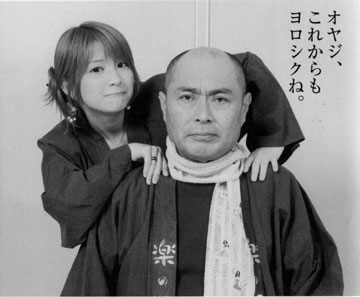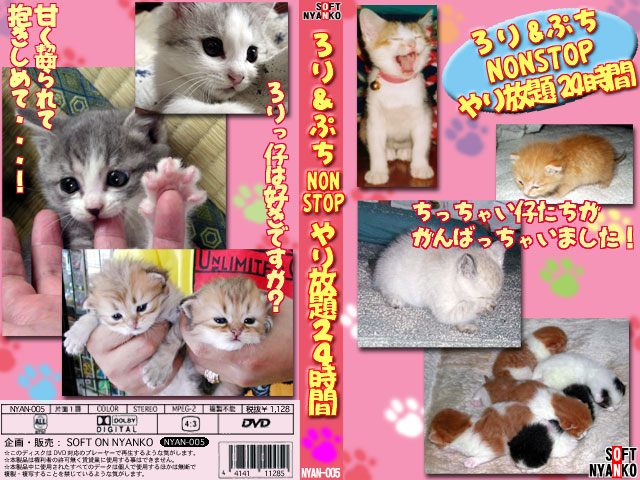Japan
J, かく語りき
[Correction from the comments: “かく語りき is bungo forこう語った or こういうふうに語った”, where bungo = “literary language; formal (or archaic) written style based on Heian-period Japanese”. So, “thus spoke X” is actually probably the best English for it. Thanks, Thomas.]
Here’s today’s stumper, blogged for the benefit of anyone who runs across the phrase 「かく語りき」 (“kakukatariki”), usually in the form 「○○はかく語りき」. It’s not in your dictionary. It’s not in my dictionary. It’s not in the Tanaka Corpus. It’s all over Japanese web pages. Google for it with a variety of whitespace options, and 99% of what you find will be references to the game Xenosaga Episode III: Also Sprach Zarathustra, where it’s used in the subtitle as the Japanese translation of “also sprach”.
This suggests that it means “thus spoke X”, a deliberately archaic way of saying “X said”. But can you trust the translation of a video-game title, in a country where “Life, The Universe, and Everything” becomes “The Great Space Cricket War”? After about two hours of digging, I can report that the answer is “yes”.
After more than a dozen false leads, I found the answer in Google Book Search. According to Hepburn’s 1886 Japanese-English dictionary:
Ki キ A contraction of keri, used as a pret. suffix to verbs, also to mark a pause or end of a sentence: katariki, said; ...
Not being a true grammarian, I also had to look up “pret.” = preterite = “past tense”. かく is “to write” (see correction above), 語る is “to say”, and you put them together with a past-tense verb ending that was current 120 years ago, for “Here are written the words of X”.
Where did I find it? In the book ちっちゃい矢口真里のでっかいあなたに会いに行くのだ‼ (loosely “Incredibly Tiny Mari Yaguchi’s Giant Interviews!”, literally “It’s Super-chibi Mari Yaguchi’s going out to meet giant you!”). She’s chatting with veteran television actor Masatou Ibu, her co-star from the daily drama series Sentou no Musume!?, and the phrase appears as a section header when their conversation turns to his advice on acting.
Here’s a picture of them from the book:

Japanese text formatting in Mac Word
I’m once again transcribing written pieces for use in my reading class, and I keep coming across little nuggets of information that I thought I’d gather in one place.
- Mac Word has two completely separate editing modes, English and Japanese. You can use either language in both modes, but some behaviors differ, and documents originally created in Japanese mode will show their heritage on other, non-Japanese-enabled computers.
- Switching between them not only requires restarting Word, but locating the "Microsoft Language Register" application inside the Office folder. In Office 2004, you drag the Word icon onto the Register; in 2008, you run it like any other app.
- In Office 2004, it will always switch you into Kotoeri input mode when you launch Word. Also, installing updates will revert you to English mode.
- In both, it will change your default settings, including margins, preferred units, and paper size (A4). Once you override these, it doesn't screw them up again.
- The two most obviously important features you get out of Japanese mode are vertical text (in the Format/Document and Format/Text Direction menus) and furigana (in the Format/Phonetic Guide menu).
- Do not attempt to type or edit in vertical-text mode; it's like watching paint dry. You can switch back and forth with the convenient Change Text Direction button on the toolbar, or switch to Draft view to edit.
- Furigana isn't on the standard toolbar. You can open the Extended Formatting toolbar, or bind a key to the FormatPhoneticGuide command (I use Control-Option-P).
- Don't add furigana until you think you're done with all other editing. The font and size of the furigana are set when they're created (font used for base word, half its size), and words that have been glossed can't be searched for. They're now equations, you see.
- When you add furigana, Word often supplies the correct kana. If it doesn't know the word, or can't guess the correct reading when you're glossing only the kanji, it will usually default to the first on-reading for each character, but will sometimes just give up. Keep an online dictionary handy, and cut-and-paste between the two windows.
- Particularly for vertical text, line and page breaks can be very tricky to control. There are two places to tinker: in the Format/Documents menu on the Document Grid panel, and in the Format/Paragraph menu on the "Indents and Spacing" and "Japanese Typography" panels (including the Options window). My usual settings:
- On: No grid
- Indentation, Special=First line,14pt (for normal paragraph indents)
- Spacing, Before=0, After=0, Line spacing=At least,24pt
- On: Don't add space between paragraphs of the same style
- Off: Snap to grid when document grid is defined.
- On: Allow hanging punctuation
- Off: Allow punctuation at the start of the line to compress (I wish this also suppressed compression of kana at the start of the line...)
- On: Compress punctuation and Japanese kana (that is, use proportional spacing)
- For stories, I set the top and bottom margins to 0.75in, and the left and right to 0.5in. That leaves room for headers and footers, which are always printed horizontally.
- Word's default Japanese font is MS Mincho, which is actually quite nice, but I prefer Apple's Hiragino Mincho at 14pt. I think it's a bit easier for students to make out all of the strokes, and using 14pt sets the default furigana size to 7pt, which is also easier to read.
- Don't manually select a heavier weight of a kanji font to get bold text; it might work, it might not, and it might appear to work until you print. Just hit the bold button.
- Always print to PDF, and always check the results out in Preview before really printing. Take particular note of things like vanishing bold text, unexpected compression of character spacing, and punctuation characters that didn't rotate correctly for vertical layout.
- Specifically: “ ” … : ⁉ ‼ ⁈ ⁇ (and maybe a few others I haven't found yet). For most of these, Word has simply used the Latin font, and you can just force it to use the kanji font. For the quotes, you need to switch from the usual Western style (“”) to the fullwidth straight style with the close at the bottom (〝〟). For the ques-bang combos, though, you can either give up, or insert a very small inline horizontal text box into the column that contains the correct character. Be sure to drag that text box off to your scrapbook for later reuse.
- Also, Word regularly hoses page numbering when printing; this seems to be tied to the "quick preview" in the print dialog, so wait for it to finish.
More as I’m reminded of them…
The Invasion Begins
Hello!Project’s most active adult member, Natsumi Abe, turned up at the Hollywood premiere of High School Musical 3. After a three-hour high-speed chase that ended in a hail of gunfire, she managed to elude her stylists and dress herself as an elegant, lovely yamato nadeshiko.
Lol, cats
Sankaku Complex is a non-worksafe site that mostly posts pictures and stories related to anime and idols, with an affection for certain common Japanese fetishes that I do not share. That is, I visit for the adult models wearing bikinis and less, and run away screaming from their lolicon-bait.
Posting this little number makes up for all their sins:

Transcribed and roughly translated:
- ろり&ぷちNONSTOPやり放題24時間, "Rori & Puchi non-stop doing whatever they want for 24 hours"
- ちっちゃい仔たちががんばっちゃいました!, "These tiny kittens gave it their all!"
- ろりっ仔は好きですか?, "Does L'il Rori like it?"
- 甘く齧られて抱きしめて…!, (sweetly/lightly) (have something nibbled) + "hold me"
I’m not sure what to do with the passive te-form of the transitive verb kajiru “to chew/gnaw/nibble on something” in that last one. The kitten’s the one doing the gentle nibbling, but then she’s asking you to do the hugging. If the intent is “let me nibble”, I think it has to be causative “give me your causing me to nibble” rather than passive “give me your being nibbled”.
Loli Cute?
As I mentioned earlier, I think Erika Yazawa is very cute. She’s also rather stacked (34E-24-34, at only 4’11”), with an on-screen persona that’s as bouncy as her barely-restrained chest.
However, her latest photobook says, right on the cover, “loli-cute looks and 88 bust with G cups”. Sorry, but I’ve found a lot of pictures of her (coughcough), and even in her debut at 15 in Idoling!!!‘s first video two years ago, she didn’t look particularly young (no higher-res streaming version available, but there’s a download link off of Acchi Muite Pie!!! (named after a common event in their tv show)).
Cute? Definitely. Loli-cute? Um, no. I’d be a lot less interested if she were working that end of the fetish aisle.
42
Ah, the joy of random surfing. How else would I come to know that the novel published in English as “Life, The Universe, and Everything” was released in Japan under the title 「宇宙クリケット大戦争」, or “The Great Space Cricket War”.
Pretty Girls + TV Show - Voice Training = Idoling!!!
I’d like to support Fuji TV’s pet idol group Idoling!!!, and it’s true that with sufficient voice processing, their singles are pleasant to listen to, and quite catchy, but I could never watch their show. Never never.
This video explains why. Be sure to watch the high-quality version to get the most out of the eye candy, and keep your hand near the mute button to protect your ears. There’s no voice processing for the show, you see, so you hear what the girls really sound like. And most of them are awful, making the worst of Hello!Project sound good.
In their defense, the show is pitched as a boot camp for aspiring idols, and they spend more time getting hit in the face with pies than they do singing. None of them have solo CD releases, but several have DVDs and photobooks, and there are a few calendars as well. Unlike Hello!Project, the girls are from a number of different agencies, and most of their promotion isn’t tied directly to their presence in Idoling!!!.
In looks, they range from cute to stunning. Two of the first-season girls who stand out are the tall, Western-looking Rurika Yokoyama and the short, busty cutie Erika Yazawa (who must need an icepack after every performance; honey, if they won’t buy you a bra, bring your own. Then again, you’ve got three solo DVDs, two photobooks, and a calendar, so “never mind”).
